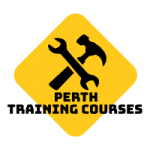In need of confined spaces training in Perth?
All people who are required to work in confined spaces must carry out appropriate training so that they do not put themselves or their fellow employees at risk.
Confined Spaces: Code of Practice, a practical guide to the WHS rules and regulations related to this area, lists “Information, Instruction and Training” as one of the best ways to keep tasks in confined spaces safe.
According to Safe Work Australia, this training must be explored in five main areas. These are the following:
– How to recognise hazards in confined spaces.
– Why risk control measures are needed and how they can be implemented.
– How to choose, use, fit, test and store personal protective equipment (PPE).
– What is the limited space permit and what it contains.
– Emergency procedures that are relevant to the industry and the confined spaces in which you work.
Safe Work Australia also outlines in the Confined Spaces: the Code of Practice of exactly who needs to receive this training.
Basically, anyone who enters or works in confined spaces or is responsible in any way, form or form for the identification of hazards and the implementation of risk control measures in those areas should be trained before entering those areas.
In addition, it is also expected that people who are responsible for issuing the above-mentioned restricted space entry permits, designing workplaces that include confined spaces or even communicating with people working in confined spaces will increase their knowledge and enhance their skills through training.
This applies to what type of “Information, Instruction and Training” is needed and who is required to do so, but which industries in Australia benefit most from Confined Space Training?
The next one is only five!
Construction work
According to Workplace Health and Safety Queensland, some of the confined spaces that could be found on construction sites include trenches, ramps and drainage pipes.
The construction industry is one of the largest employers in Australia, with approximately one million people (or nine per cent of the country’s population) employed. However, it is also one of Australia’s most dangerous sectors. Between 2007-08 and 2011-12, a total of 211 people died of work-related injuries in the construction industry.
This means that the industry’s fatality rate is almost twice the national average – 4.34 per 100,000 workers, compared to 2.29 per 100,000 workers. Many of the accidents that led to the deaths of these employees could have been avoided if best practises were observed and appropriate training had been completed.
Mining:
A total of 245,000 people work in the mining industry, which is equivalent to 2% of the Australian workforce.
Besides employing a lot of people, the mining industry also hurts and kills a lot of workers. A total of 36 people died of work-related injuries in this sector between 2007-08 and 2011-12, says Safe Work Australia – which, like the construction industry, puts the death rate of the mining industry at 70 per cent higher than the national rate (3.84 deaths per 100,000 workers).
Out of these deaths, three were caused by a “slide or cave-in.” This possibility could have been reduced if the risk assessment was carried out by a trained professional.
Manufacture
The manufacturing sector is another sector in which employees may need to enter and work in confined spaces. It employs one million or 9% of the country’s total workforce and was responsible for 113 fatalities between 2007-08 and 2011-12.
Food and drink
Believe it or not, those working in the food and beverage industry may from time to time be required to perform tasks in enclosed or partially enclosed areas.
The Department of Education, Employment and Workplace Relations states that employees may need access to vessels used for storing, transporting and processing materials, products and “finished food and beverages.”
Transportation and Storage
Understanding how to safely transport and store hazardous substances – such as flammable gases – in the confined spaces of vehicles is important in this industry. If proper control measures are not implemented and these confined spaces are damaged, the results could be catastrophic.
If you’re working in confined spaces in any of the above industries, or would just like more information about what Confined Space Training can do for you and your career get in touch.
Previous Post:
Things You Should Know About Working In Confined Spaces
Next Post:
What is a Confined Space?

